In pictures: Charles Taylor and the Liberia and Sierra Leone wars
- Published
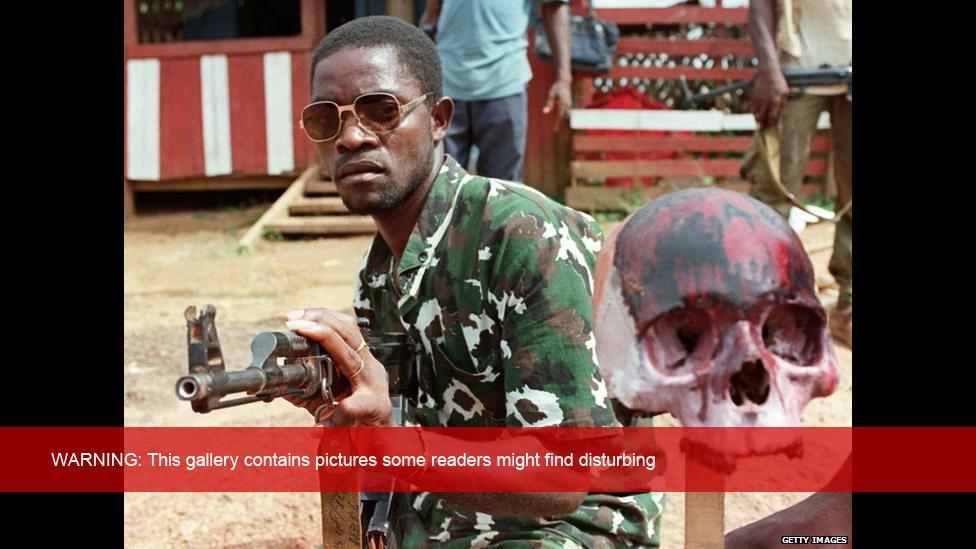
A UN-backed court in the Hague has upheld convictions and a 50-year prison sentence against Liberia's former President Charles Taylor, found guilty of aiding and abetting war crimes in Sierra Leone's civil war. Taylor first came to prominence in 1989 when he started a rebellion against Liberia's then President Samuel Doe. Pictured is a rebel loyal to Taylor next to the skull of one of Mr Doe's soldiers.
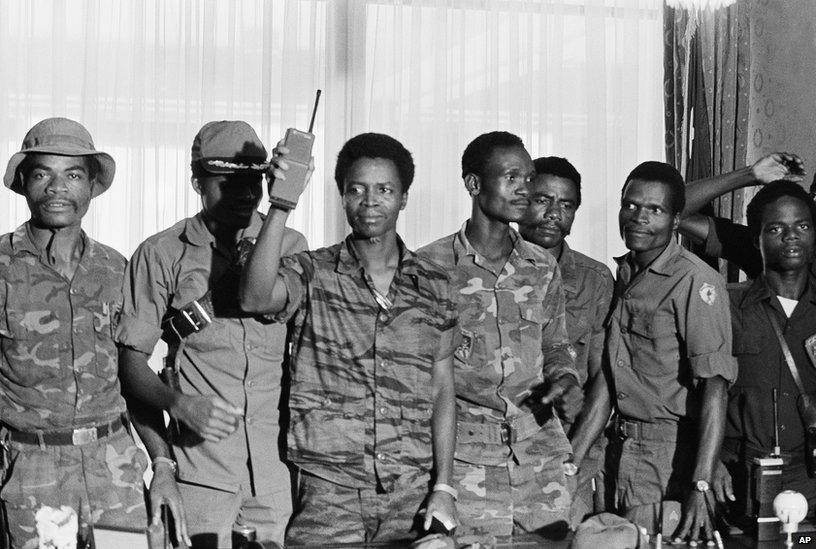
Liberia, Africa's oldest republic, was relatively calm until 1980 when William Tolbert was overthrown by Sergeant Doe after food price riots. President Tolbert and 13 of his aides were publicly executed. A People's Redemption Council headed by Doe (with walkie-talkie) suspended the constitution and assumed full powers.
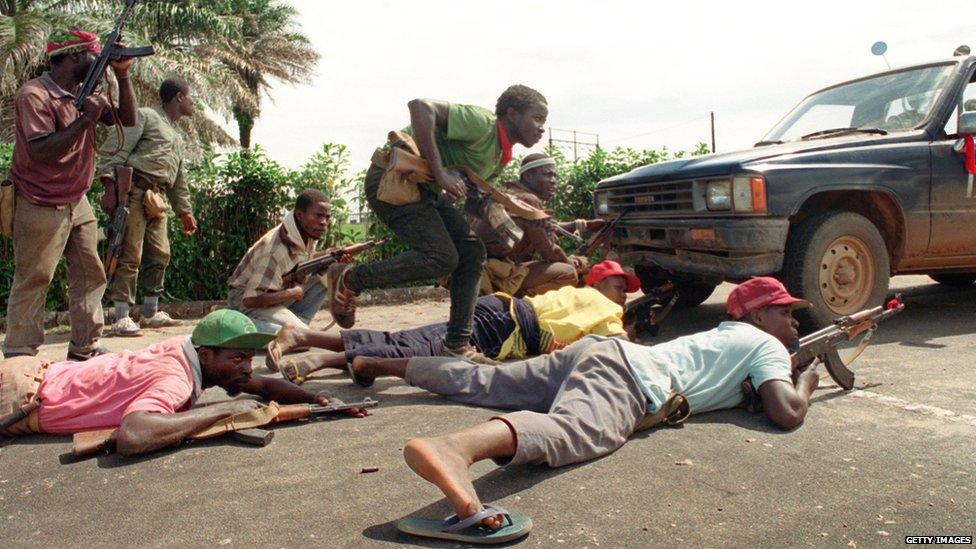
By the late 1980s, arbitrary rule and economic collapse culminated in civil war when Charles Taylor's National Patriotic Front of Liberia (NPFL) militia overran much of the countryside.
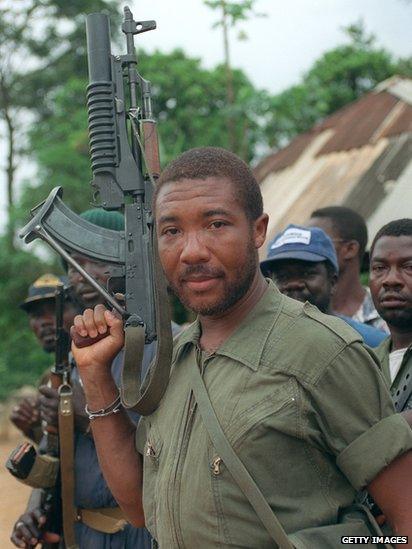
Mr Taylor, pictured, continued his march on to the capital, Monrovia to oust President Doe. Despite the Economic Community of West African States (Ecowas) sending a peacekeeping force, Doe was publicly tortured and executed by a splinter group of the NPFL.
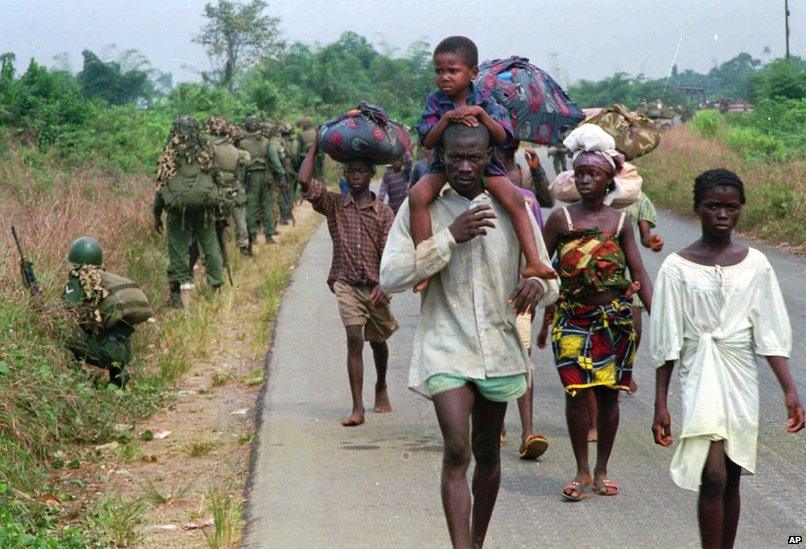
Fighting intensified as the rebels fell out and battled each other, the Liberian army and the peacekeepers. In 1995 a peace agreement was signed, leading to the election of Mr Taylor as president.
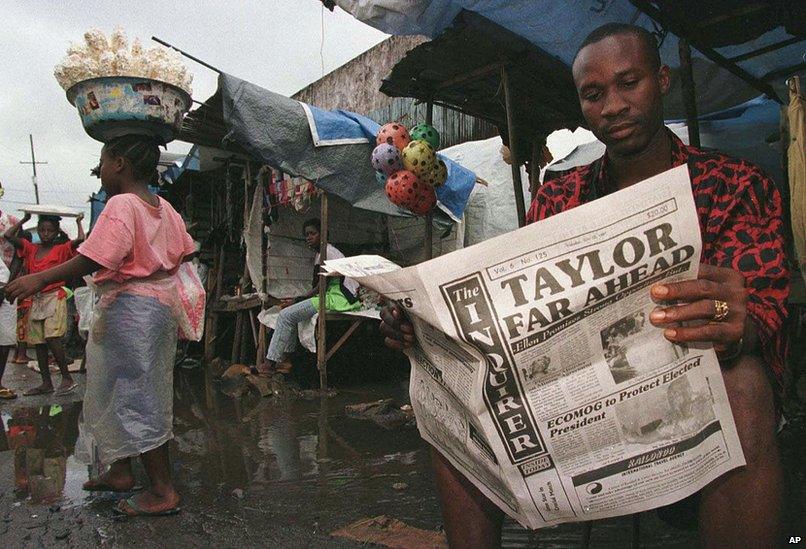
He was elected in 1997 and international observers declared the poll free and fair - leading to hopes of an end to the years of bloodshed.
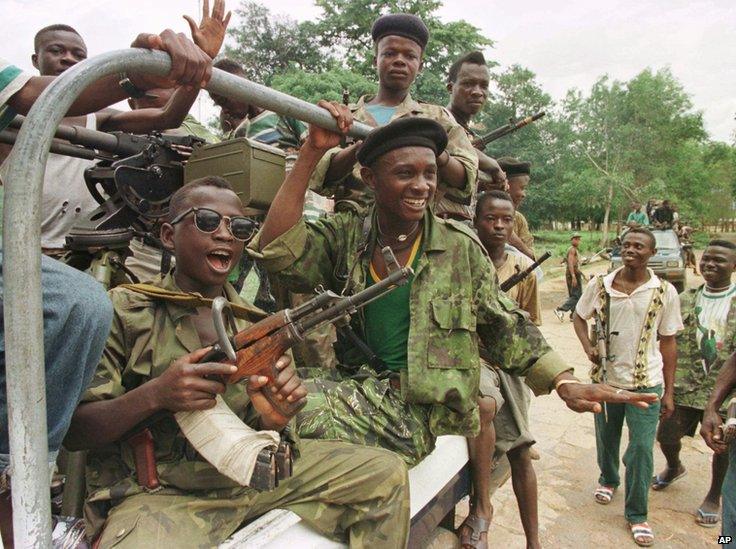
However, the civil war in neighbouring Sierra Leone continued with former army corporal Foday Sankoh and his Revolutionary United Front (RUF) waging a campaign of amputation and rape, and also capturing towns on the border with Liberia.
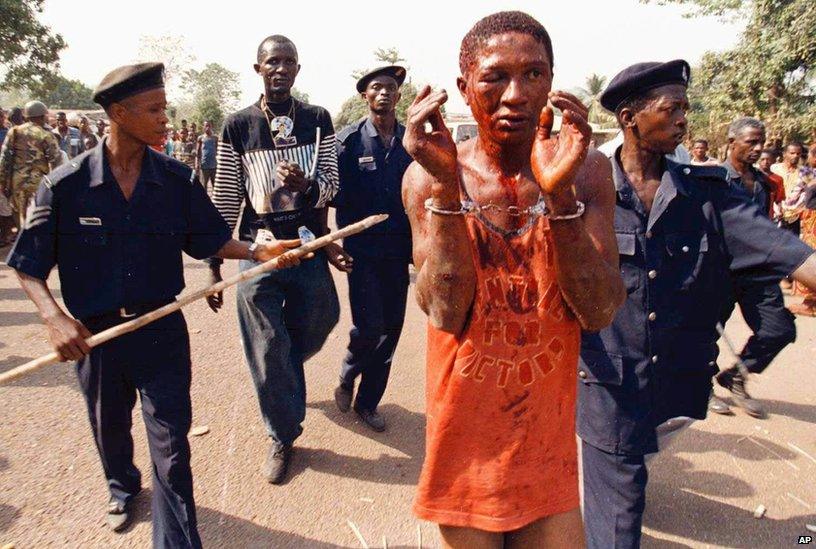
West African peacekeepers, known as Ecomog, were also sent to Sierra Leone. Here they are protecting a man accused of collaborating with the rebels from a lynch mob.
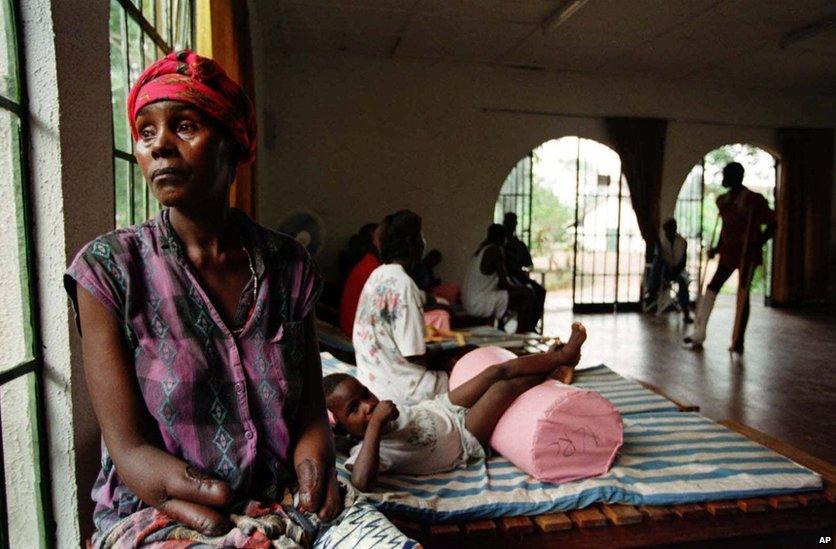
Ghana, Nigeria and others accused Liberia of backing the RUF rebels who mutilated thousands - their trademark was to chop off the hands or legs of civilians. The respite in Liberia was brief, with anti-government fighting breaking out in the north in 1999. Mr Taylor accused Guinea of supporting a rebellion.
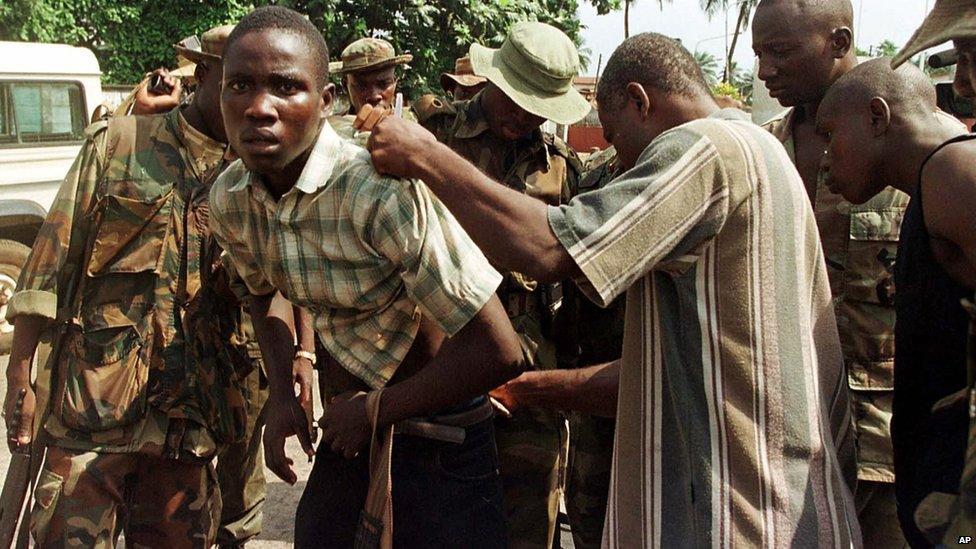
By 1999, Sierra Leone's RUF rebels seized parts of Freetown from Ecomog. After weeks of bitter fighting they were driven out, leaving behind 5,000 dead and a devastated city.
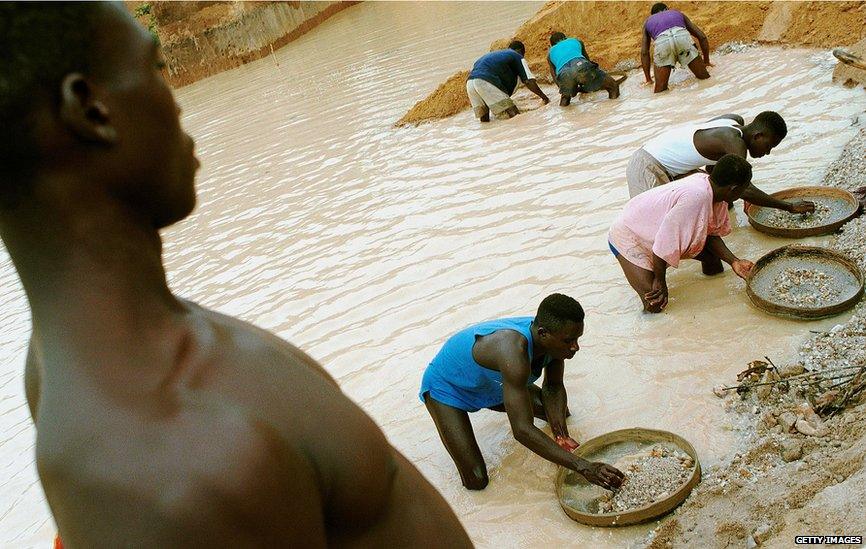
Stability remained elusive in Liberia. By 2001 the UN Security Council reimposed an arms embargo to punish Mr Taylor for trading weapons for diamonds from rebels in Sierra Leone.
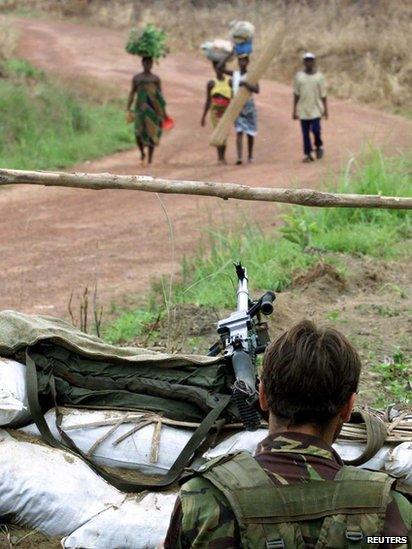
In 2000 rebels once more closed in on Freetown; 800 British paratroopers were sent to evacuate British citizens and to help secure the airport for UN peacekeepers; rebel leader Foday Sankoh was captured - he later died in custody.
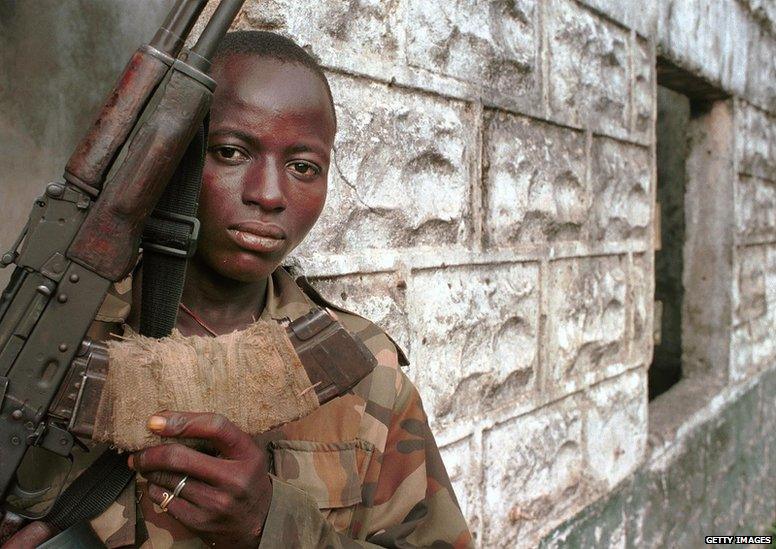
In 2001 UN troops for the first time began to deploy peacefully in Sierra Leone's rebel-held territory. Disarmament of rebels began, and the British-trained Sierra Leone army also started to move across the country.
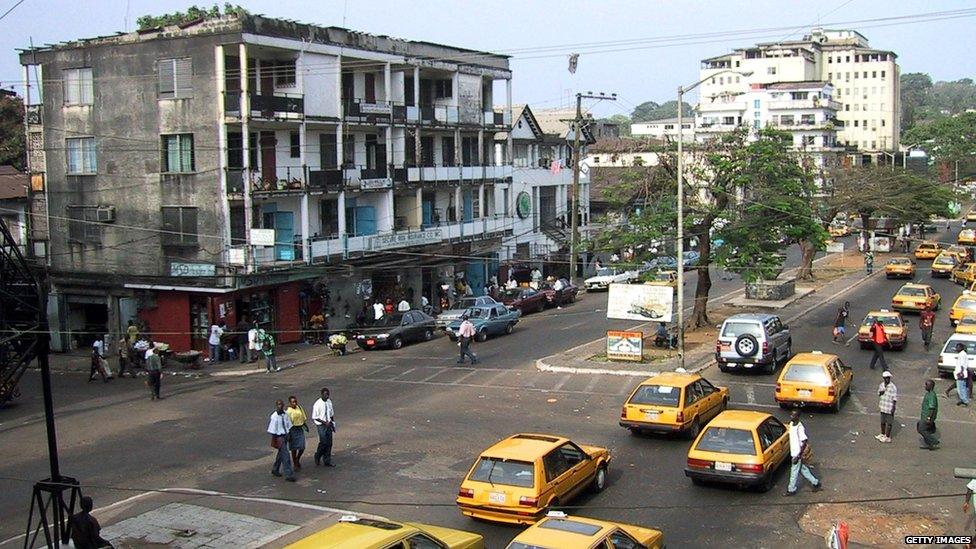
In January 2002 the war in Sierra Leone was declared over. The UN mission said the disarmament of 45,000 fighters was complete. The government and the UN agreed to set up war crimes court.
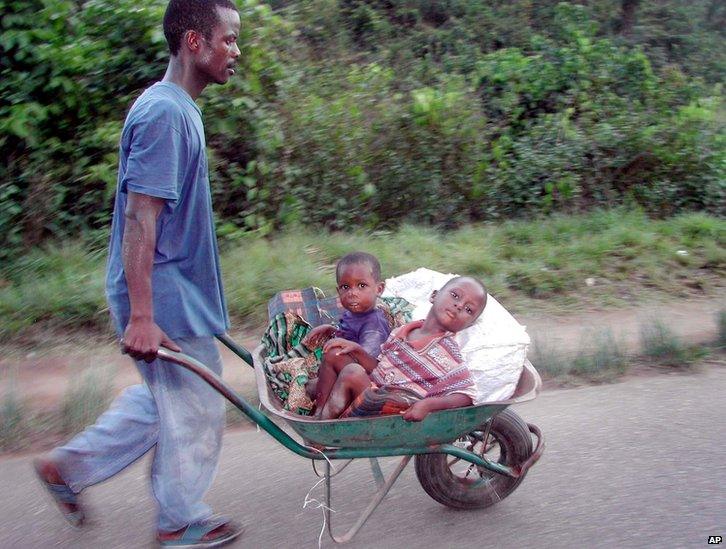
By 2003, fighting between Liberia's government and rebel troops spread and many were forced to flee to camps. Talks in Ghana aimed at ending the rebellion were overshadowed by an indictment accusing President Taylor of war crimes over his backing of rebels in Sierra Leone.
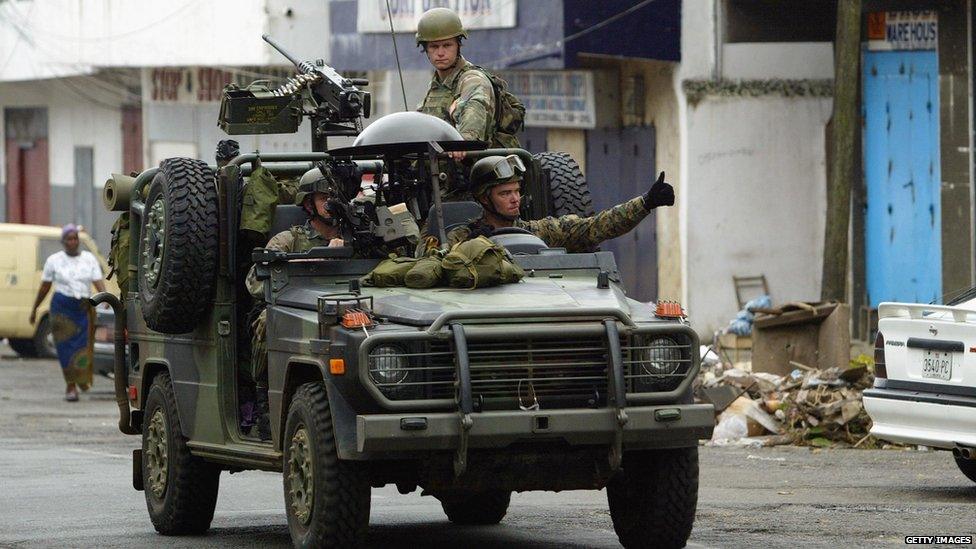
In August 2003, Mr Taylor left Liberia and handed power to his deputy Moses Blah. US troops arrived and an interim government led by Gyude Bryant took control.
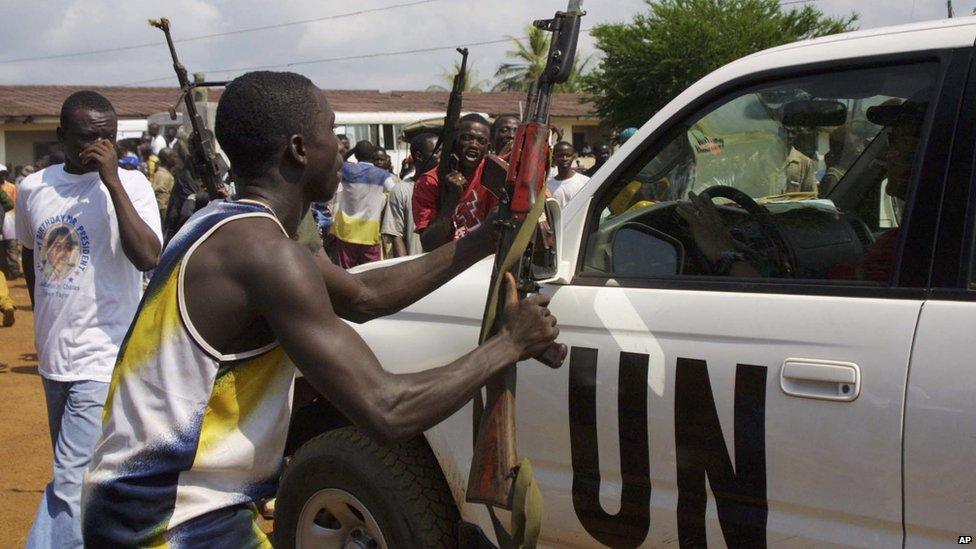
By the end of 2003, US forces were replaced by the UN, which sent thousands of peacekeepers. In 2006, Mr Taylor tried to flee his exile in Nigeria but was caught. He was eventually transferred to The Hague, as it was feared that holding his trial in West Africa could jeopardise the new-found peace in Liberia and Sierra Leone.